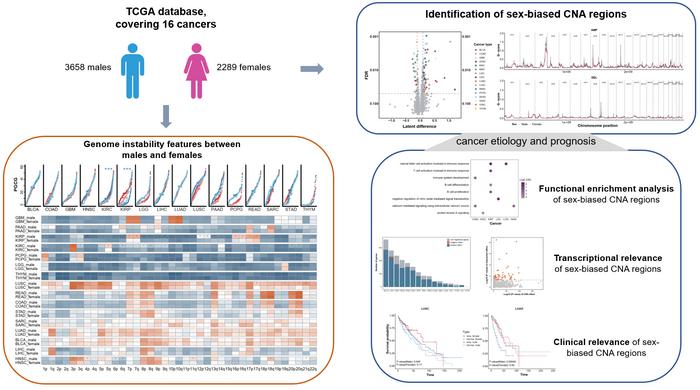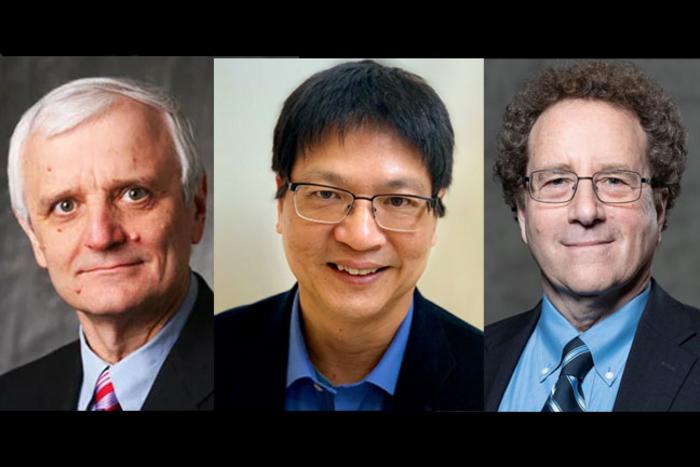Making table tennis accessible for blind players #Acoustics23
SYDNEY, Dec. 6, 2023 – Table tennis has been played for decades as a more accessible version of tennis. The sport is particularly beginner-friendly while maintaining a rich level of competitive play. However, like many sports, it remains inaccessible to people who are blind or have low vision. Credit: Phoebe Peng SYDNEY, Dec. 6, 2023 […]

SYDNEY, Dec. 6, 2023 – Table tennis has been played for decades as a more accessible version of tennis. The sport is particularly beginner-friendly while maintaining a rich level of competitive play. However, like many sports, it remains inaccessible to people who are blind or have low vision.

Credit: Phoebe Peng
SYDNEY, Dec. 6, 2023 – Table tennis has been played for decades as a more accessible version of tennis. The sport is particularly beginner-friendly while maintaining a rich level of competitive play. However, like many sports, it remains inaccessible to people who are blind or have low vision.
Phoebe Peng, an Engineering Honours student at the University of Sydney, is researching ways to allow people with low vision and blindness to play pingpong using sound.
The process uses neuromorphic cameras and an array of loudspeakers, designed to allow players to track the ball and movements based on sound. Peng will present her work Dec. 6 at 10:20 a.m. Australian Eastern Daylight Time, as part of Acoustics 2023 Sydney running Dec. 4-8 at the International Convention Centre Sydney.
According to Peng, table tennis makes a perfect test case for this kind of technology.
“The small size of the ball and table, along with the movement of the ball in 3D space, are things that make table tennis difficult to play for those with low vision and complete blindness,” said Peng, who completed the work as part of her Honours thesis. “Making this sport more accessible while also exploring the potential of neuromorphic cameras were my two biggest motivators.”
The neuromorphic cameras Peng employed are ideal for tracking small objects like table tennis balls. Unlike normal cameras that capture complete images of a scene, neuromorphic cameras track changes in an image over time. Using two perfectly positioned cameras, Peng could identify and track a ball in three dimensions in real time. She then fed that data into an algorithm controlling an array of loudspeakers along the sides of the table, which created a sound field matching the position of the ball.
While this system works well, Peng says more experimentation is needed before it will be ready for actual play.
“An ongoing technical challenge is the matter of human perception of sound,” said Peng. “There are limitations on how accurately people can perceive sound localization. What type of sound should be used? Should the sound be continuous? This is a technical challenge we’ll be tackling in the next stage of development.”
###
———————– MORE MEETING INFORMATION ———————–
The Acoustical Society of America is joining the Australian Acoustical Society to co-host Acoustics 2023 in Sydney. This collaborative event will incorporate the Western Pacific Acoustics Conference and the Pacific Rim Underwater Acoustics Conference.
Main meeting website: https://acoustics23sydney.org/
Technical program: https://eppro01.ativ.me/src/EventPilot/php/express/web/planner.php?id=ASAFALL23
ASA PRESS ROOM
In the coming weeks, ASA’s Press Room will be updated with newsworthy stories and the press conference schedule at https://acoustics.org/asa-press-room/.
LAY LANGUAGE PAPERS
ASA will also share dozens of lay language papers about topics covered at the conference. Lay language papers are summaries (300-500 words) of presentations written by scientists for a general audience. They will be accompanied by photos, audio, and video. Learn more at https://acoustics.org/lay-language-papers/.
PRESS REGISTRATION
ASA will grant free registration to credentialed and professional freelance journalists. If you are a reporter and would like to attend the meeting or virtual press conferences, contact AIP Media Services at media@aip.org. For urgent requests, AIP staff can also help with setting up interviews and obtaining images, sound clips, or background information.
ABOUT THE ACOUSTICAL SOCIETY OF AMERICA
The Acoustical Society of America (ASA) is the premier international scientific society in acoustics devoted to the science and technology of sound. Its 7,000 members worldwide represent a broad spectrum of the study of acoustics. ASA publications include The Journal of the Acoustical Society of America (the world’s leading journal on acoustics), JASA Express Letters, Proceedings of Meetings on Acoustics, Acoustics Today magazine, books, and standards on acoustics. The society also holds two major scientific meetings each year. See https://acousticalsociety.org/.
ABOUT THE AUSTRALIAN ACOUSTICAL SOCIETY
The Australian Acoustical Society (AAS) is the peak technical society for individuals working in acoustics in Australia. The AAS aims to promote and advance the science and practice of acoustics in all its branches to the wider community and provide support to acousticians. Its diverse membership is made up from academia, consultancies, industry, equipment manufacturers and retailers, and all levels of Government. The Society supports research and provides regular forums for those who practice or study acoustics across a wide range of fields The principal activities of the Society are technical meetings held by each State Division, annual conferences which are held by the State Divisions and the ASNZ in rotation, and publication of the journal Acoustics Australia. https://www.acoustics.org.au/
###
What's Your Reaction?

































